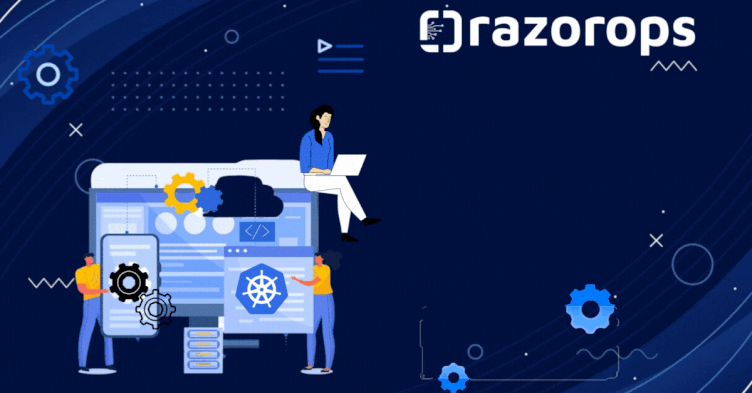
Mastering Kubernetes A Guide to Seamless CI CD Integration
Kubernetes has emerged as the de facto standard for container orchestration, enabling organisations to deploy and manage applications at scale. But to fully unlock the potential of Kubernetes, seamless integration with Continuous Integration and Continuous Deployment (CI/CD) pipelines is essential. In this guide, we’ll walk you through the key steps to master Kubernetes CI/CD integration for a more efficient and streamlined development workflow.
Understanding Kubernetes and CI/CD
Kubernetes: An Overview Kubernetes, often abbreviated as K8s, is an open-source container orchestration platform that automates the deployment, scaling, and management of containerized applications. It provides a robust infrastructure for managing containers, ensuring high availability, scalability, and resource optimization.
CI/CD: Streamlining Software Delivery Continuous Integration (CI) and Continuous Deployment (CD) are practices that aim to automate the software delivery pipeline, from code changes to production deployment. CI involves automatically building and testing code changes, while CD automates the deployment of successfully tested code to various environments.
Seamless CI/CD Integration
1. Containerizing Your Application: The first step is to containerize your application. Docker is a popular choice for creating containers. Ensure your application runs smoothly in a containerized environment.
2. Version Control: Use a version control system (e.g., Git) to manage your codebase. Create branches for different features and use pull requests for code review.
3. CI/CD Pipeline: Build a CI/CD pipeline using tools like Jenkins, GitLab CI/CD, or Travis CI. Automate testing, building, and deployment processes.
4. Docker Registry: Store your container images in a Docker registry (e.g., Docker Hub, AWS ECR, or Google Container Registry).
5. Kubernetes Manifests: Define Kubernetes manifests (YAML files) that describe how your application should run in the cluster.
6. GitOps: Embrace GitOps principles by storing Kubernetes manifests in a Git repository. Use tools like Flux or Argo CD to automatically sync your Kubernetes cluster with the Git repository.
7. Canary Deployments: Implement canary deployments to gradually roll out changes, monitor their impact, and roll back if necessary.
8. Monitoring and Observability: Integrate monitoring tools (e.g., Prometheus and Grafana) to gain insights into your application’s health and performance.
9. Security: Prioritise security by scanning container images for vulnerabilities and following best practices for RBAC (Role-Based Access Control).
Why Kubernetes and CI/CD?
Before diving into the integration process, let’s briefly touch upon why Kubernetes and CI/CD are a match made in heaven for modern software development.
Kubernetes Benefits:
Scalability: Easily scale your applications up or down as needed.
Containerization: Efficiently package and deploy applications in containers.
Self-healing: Automatically recover from failures to ensure high availability.
Portability: Run your applications anywhere, whether on-premises or in the cloud.
CI/CD Benefits:
Faster Releases: Automate the software delivery process for rapid releases.
Consistency: Ensure consistent deployments across different environments.
Quality Assurance: Run tests automatically to catch bugs early.
Collaboration: Facilitate collaboration between development and operations teams.
Steps to Master Kubernetes CI/CD Integration
1. Containerize Your Application
Before integrating Kubernetes with CI/CD, containerize your application using technologies like Docker. Containers encapsulate your application and its dependencies, making it easier to manage and deploy.
2. Set Up a CI/CD Pipeline
Choose a CI/CD tool that suits your needs, such as Jenkins, Travis CI, CircleCI, or GitLab CI/CD. Configure the pipeline to build and test your containerized application whenever changes are pushed to your version control system.
3. Deploy a Kubernetes Cluster
Set up a Kubernetes cluster, either on-premises or in the cloud, using tools like Kubernetes Operations (kops), kubeadm, or managed Kubernetes services like AWS EKS, Google GKE, or Azure AKS.
4. Define Kubernetes Deployment Manifests
Create Kubernetes YAML manifests that define how your application should be deployed, including services, replicas, and volumes. These manifests serve as the blueprint for your application’s deployment.
5. Automate Deployment to Kubernetes
Integrate your CI/CD pipeline with Kubernetes using tools like kubectl or Helm charts. Automate the deployment process, ensuring that new container images are pushed to the cluster and updates are rolled out smoothly.
6. Implement Rollback Strategies
Plan for rollbacks in case of failures or issues in production. Kubernetes provides features like Rollbacks, Helm Rollbacks, and Canary deployments to help you manage updates and rollbacks effectively.
7. Monitor and Optimize
Set up monitoring and observability tools to gain insights into your Kubernetes cluster’s health and performance. Use metrics to optimize resource allocation and ensure efficient scaling.
Best Practices for Kubernetes CI/CD Integration
Infrastructure as Code (IaC): Manage your Kubernetes resources using IaC tools like Terraform or Kubernetes manifests stored in version control.
Secret Management: Safeguard sensitive information, such as API keys and passwords, using Kubernetes Secrets or external secret management tools.
Security: Implement security best practices, including role-based access control (RBAC) and network policies, to protect your Kubernetes cluster.
Testing: Incorporate testing at every stage of your CI/CD pipeline, including security scanning and performance testing.
Mastering Kubernetes CI/CD integration is a crucial step towards achieving a streamlined and efficient software delivery process. By containerizing your application, setting up a robust CI/CD pipeline, and automating deployments to Kubernetes, you can harness the full potential of these technologies to accelerate your development workflow and deliver high-quality software at scale.
Tutorials & Guides
Kubernetes Official Documentation
Top Reading
Kubernetes The Hard Way by Kelsey Hightower
Kubernetes Best Practices by Google Cloud
Upcoming Events
Keptn Community Meeting - APAC / EMEA
October 4, 1:30 – 2:15 PM (PST)
Cloud Native Live: Architect Your Sched - A guide to KubeCon + CloudNativeCon
Oct 5, 9:30 – 10:30 PM (PST)
Oct 6, 4:30 PM (PST) Oct 7, 10:29 AM (PST)
DevOps Jobs
Google - Check out all the jobs
here
Accenture -Check out all the jobs here
Infosys -Check out all the jobs here
Microsoft -Check out all the jobs
here

PS- We publish this newsletters every week, Subscribe and share with your friends. We hope this newsletter has provided valuable information. Follow RazorOps Linkedin Page Razorops, Inc.





